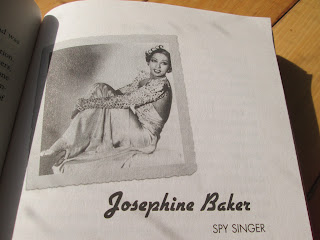It is a pleasure to read how these brave,
intelligent women fought and fooled the Nazis. Their endeavors were not easy.
Some of them perished in the process, but many of them survived and shared
their stories, setting alight a wellspring of inspiration and education for
those who dare to learn the facts of history.
The experiences of these women are a testament to the resilience of the human spirit amid harrowing circumstances. Their guile and courage saved many lives.
This edifying read also delves into the root causes of World War II. The introduction offers an insightful and thorough analysis of the ways Adolf Hitler became popular.
Kathryn Atwood’s book is a unique read because the
meticulous research on the experiences of these remarkable women follows an
in-depth explanation of the political and social context of their countries of
origin during World War II. Women Heroes of World War II is a valuable
resource for schools and universities. It is also a reminder that countries that treat women as second-class citizens are in reality
afraid of their power and intelligence. (Cowardice has many faces and treating
women like property is one of those faces).
The forces that empowered a dictator like
Hitler should not be ignored. The economic constraints of the 1930s are often cited to explain the origin of the horrifying Nazi regime, but there are social issues that are conveniently overlooked.
Atwood’s book integrates every aspect of this period with sensibility and
knowledge.
Hatred was the engine that drove the
irrational behaviors of this regime.
“Schools became places of indoctrination,
where history classes taught that Hitler was descended from great German
heroes, math classes discussed how much money the state lost while supporting
mentally challenged individuals, and biology classes taught the superiority of
the Aryan race and the inferiority of the Jewish race.”
Many people were blinded to the cruelty of the
Nazis. Certain countries chose to ignore it, claiming that their own interests
had to take precedence over the abuses of the Nazi regime. Hitler established a
system that incited hatred and violence toward those who were different.
“He instituted the Hitler-Jugend (Hitler
Youth), a state- run program for all children ages 10-18. The Hitler Youth
program was geared to make Germany’s children proud, military Nazis. They
engaged in warlike games, killed small animals (to become insensitive to
suffering and death), sang songs about German streets running with Jewish
blood, and were encouraged toward fanatical, personal devotion to Hitler, a
devotion that was to take precedence over their relationships with their
parents. (Children were encouraged to turn in their own parents to the Gestapo
if they heard them say anything against the Fuhrer).”
I am rereading some of the parts that explore
the situation of various countries during World War II: Germany, Poland,
France, The Netherlands, Belgium, Denmark, Great Britain and the United States
of America.
The invasion of Poland was of special interest
to me.
“World
War II officially began on September 1, 1939, when German tanks and planes
stormed into Poland with a new type of warfare called blitzkrieg, or ‘lightning
war,’ in which an enemy was quickly overwhelmed by the simultaneous use of
aircraft, tanks, and armed soldiers.”
Poland
military leaders were not prepared because their allies—France and Great
Britain—had urged them to refrain from preparing for a defensive war to avoid
aggravating Germany. The allies promised they would help them if German forces
invaded them, but they did not keep their promise. Poland waited in vain for
assistance. Poland eventually had to surrender to the German forces. To make
matters worse, the eastern side of Poland was also invaded by the Soviet Union
under Stalin’s power, so Poland ended up being divided by Germany and the
Soviet Union. Millions of Poles were slaughtered or deported by the German
Nazis. Thousands were also killed by Stalin’s soldiers.
The Nazis separated Polish children from their
families by force and ran tests on them to evaluate how Aryan they were. Based
on their conclusions, they decided what to do with them.
“As
badly as these non-Jewish Poles were treated, Poland’s Jews were treated even
worse. They were squeezed into tiny ghettos where living conditions were
horrible and where many died quickly from disease, exposure, and starvation.
But the worst was yet to come. Toward the end of 1941, the Nazi occupiers began
to build camps that could kill large numbers of Jews very quickly. Jews from
Poland, and, later, Jews from all over occupied Europe, were shoved onto cattle
cars destined for these camps, where they were starved and worked to death, or
immediately killed.”
Who were the people who went against this
extermination and helped to save lives during World War II? Atwood’s book highlights the stories of women who had the courage to defy the Nazis by
fooling them and going against their “norms”. These women saved many lives amid
the chaos. How did they do it? Kathryn Atwood explores their experiences and shares astounding
details. I hope their names and stories will not be forgotten. I hope they will
offer a beacon of hope wherever there is despair. May their strength persist in
the desire of those who have the confidence to stand up against the oppression of fascist dictators, theocracies and other totalitarian regimes that force-feed their citizens with factoids in order to destroy the essence of democracies across the world.
May we all stand up for democracy with the
voice of truth, and may the inspiration of these women live on in our
aspirations and goals.





